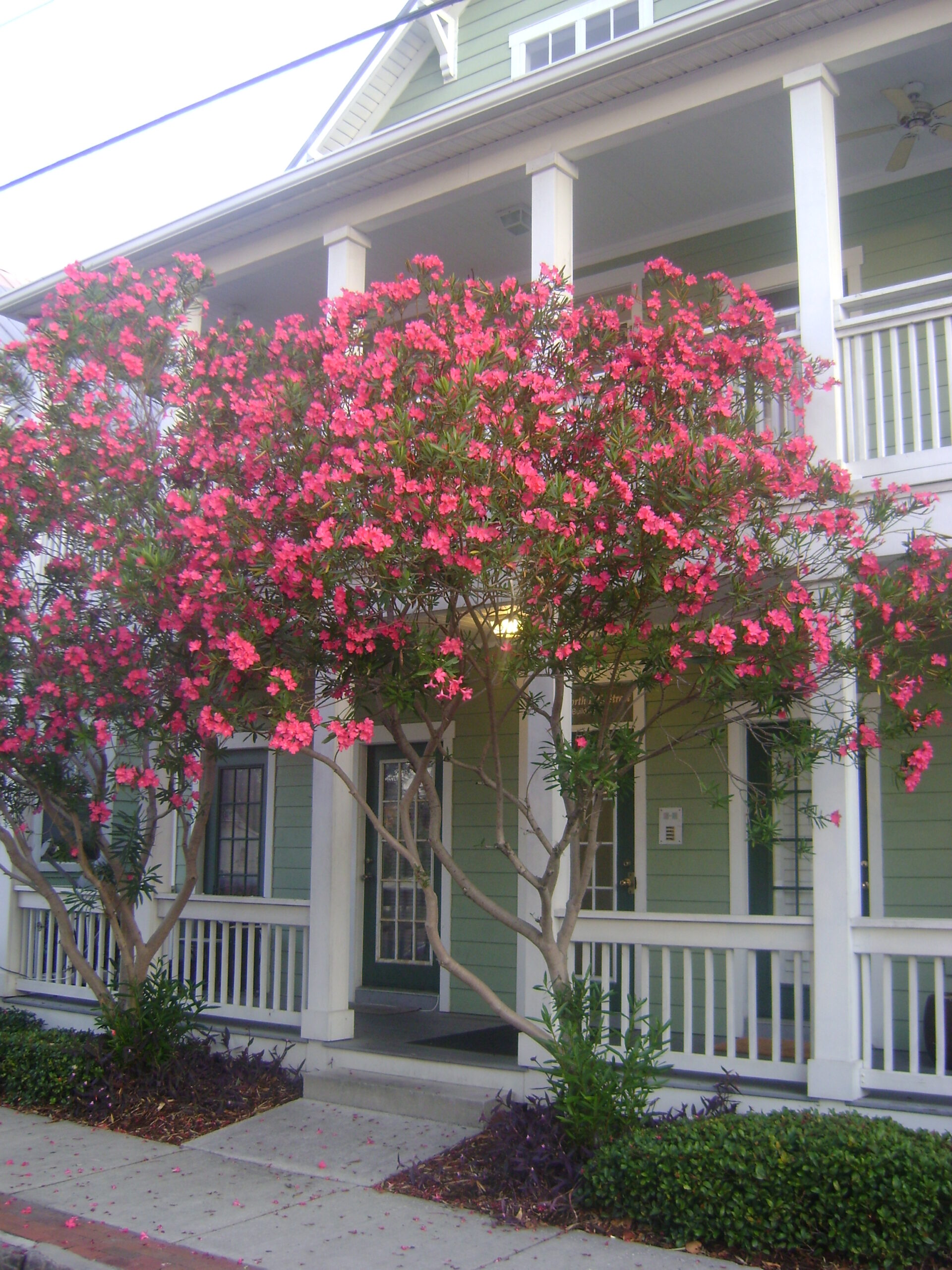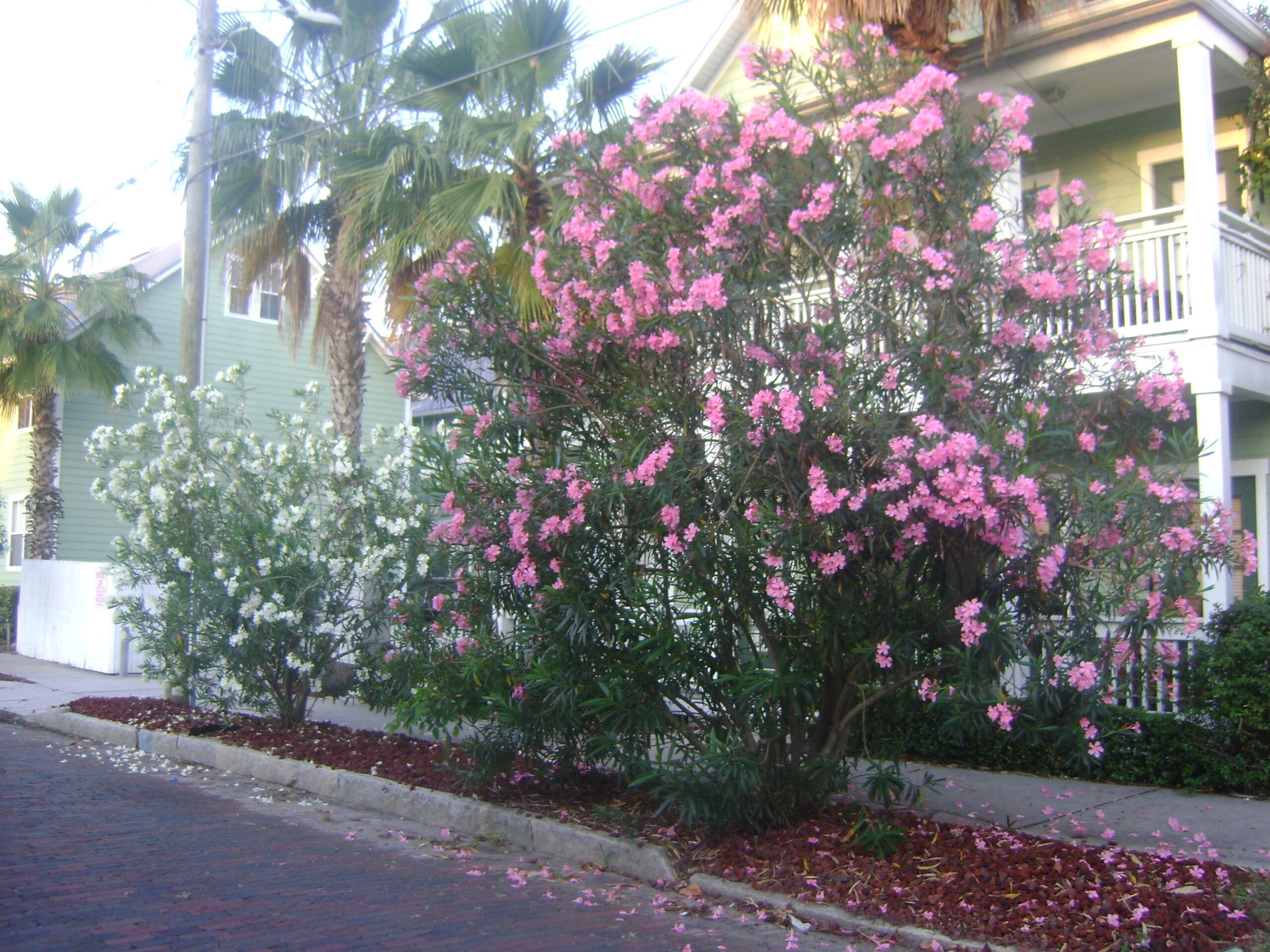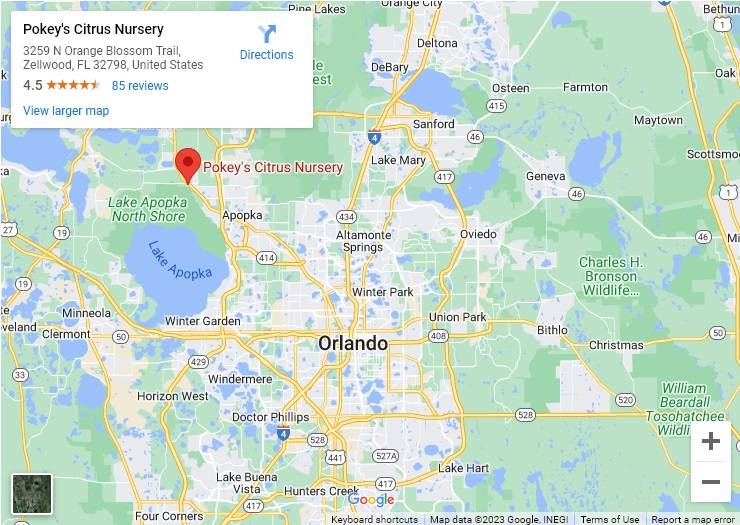Versatile, showy oleanders add year-round color to the Florida home landscape.
Usually cultivated as an evergreen shrub, oleanders can also be pruned into small trees. The slender branches are dense and assume an upright, mounded pattern. The stems and trunk range in color from light green to pale gray. The dark green leaves are long, narrow, leathery and sword-like. The profuse flowers appear in clusters at the stem ends and can be white, pink, red, salmon-colored or pale yellow. In Florida, oleanders bloom all year, with heaviest flowering occurring during the warmer months.
Oleanders are seen everywhere because they’ll grow almost anywhere. These sturdy shrubs thrive in sand, clay or rocky soils. They’re drought resistant and can stand overwatering. They don’t mind dust or exhaust and are suitable for street plantings. They have an unusually high salt tolerance, their open growth pattern helps them survive high winds, and they can take temperatures as low as 20F with minimal damage. The one thing oleanders demand is direct sun and lots of it. When planted in areas of deep shade, they grow more slowly, blooming is reduced and the branches can become leggy or sparse.
In Florida, the deep green foliage and brilliant blossoms of oleanders make them popular additions to tropical jungle landscapes. Limb them up into small, single-trunked trees to create delightful accents in borders or flowerbeds. Available dwarf varieties can be planted in containers to add splashes of color to porches or patios. Fast-growing oleanders are most often cultivated in rows to create tall, dense and colorful green fences, windbreaks or privacy screens.
Warning: All parts of the oleander are poisonous if ingested and may cause skin irritation. Exercise caution when planting where small children or pets are present and wear protective clothing while pruning. Never burn fallen or pruned branches, leaves or limbs.




